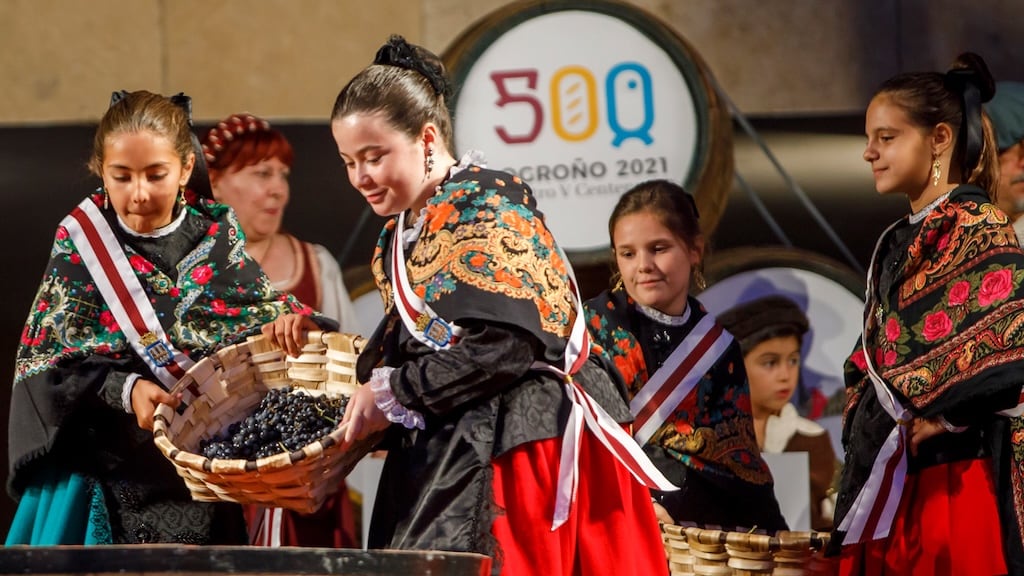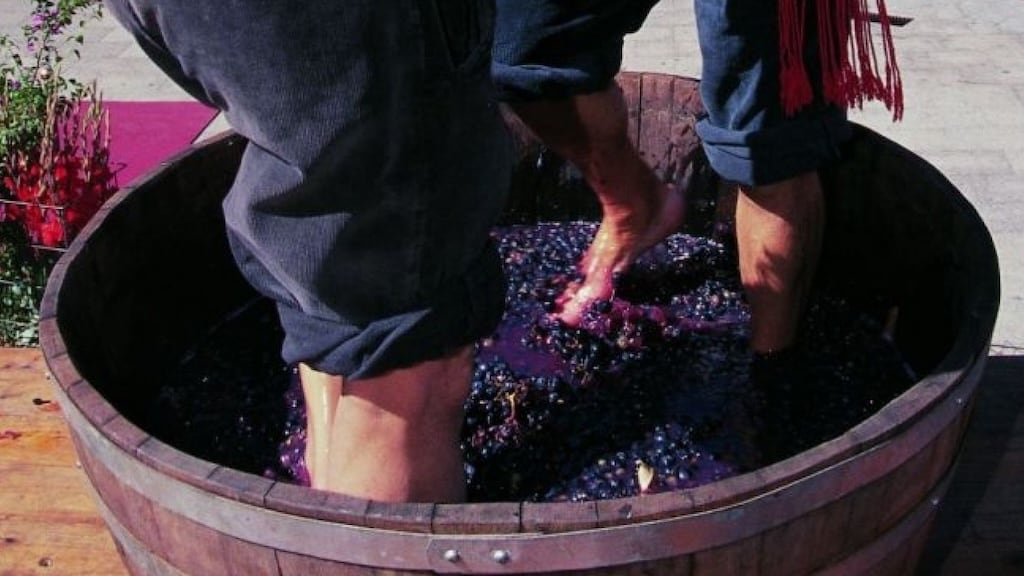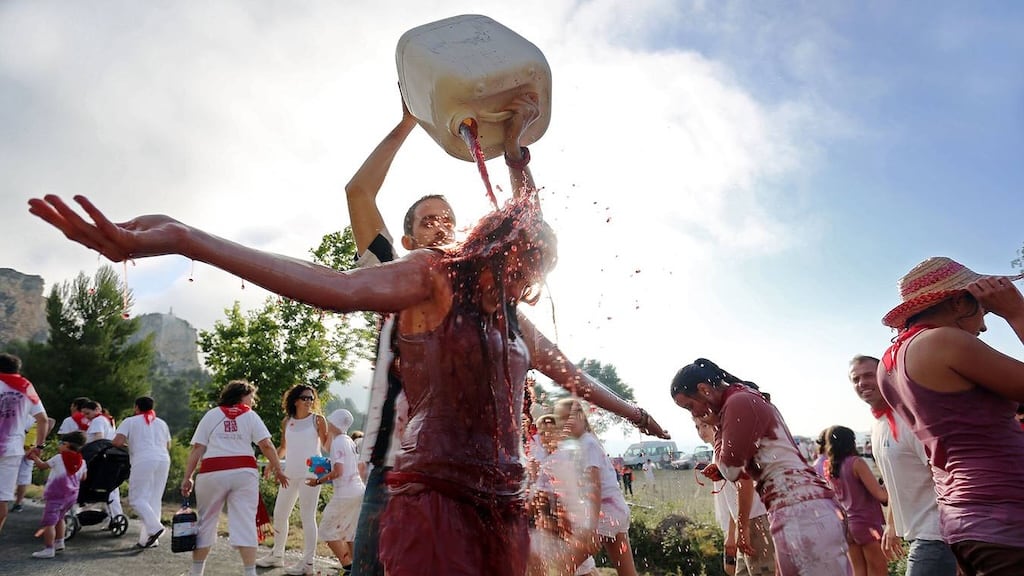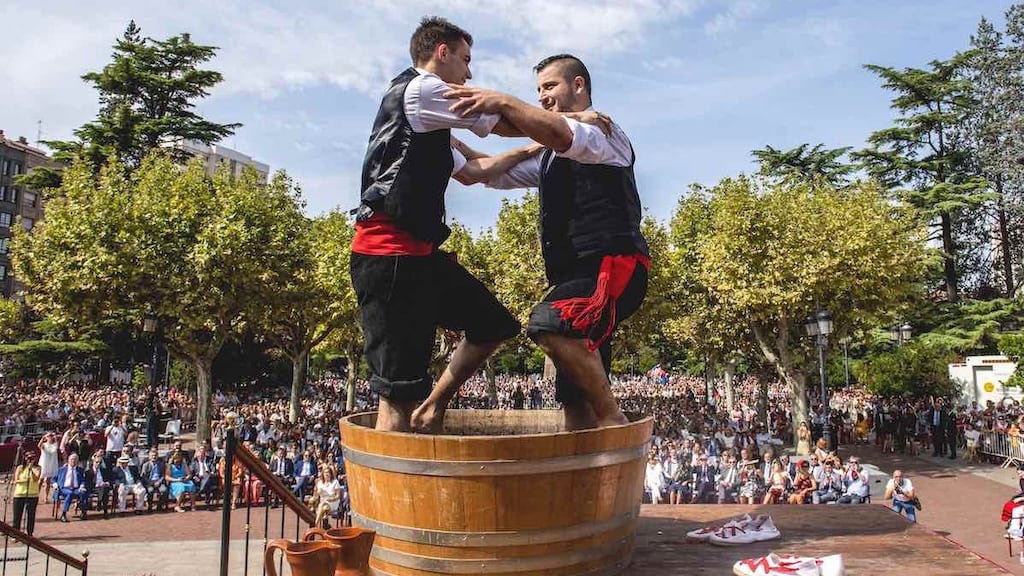A Celebration of Wine and Tradition in Spain
The Rioja Harvest Festival, or "Fiesta de la Vendimia" as it is locally known, is a vibrant celebration marking the end of the grape harvest in La Rioja, Spain. This traditional annual event, held in the historic city of Logroño, beautifully intertwines the region's rich cultural heritage with its renowned wine-making traditions.
As one of Spain's most anticipated festivals, it draws thousands of visitors from around the globe, eager to experience the lively atmosphere and deep-rooted traditions that define this unique celebration.


Historical Background
The origins of the Rioja Harvest Festival date back to the 12th century, when local monks initiated the tradition of grape stomping by foot to extract juice. This centuries-old practice, known as "la pisada," remains a central feature of the festival today, offering a glimpse into the region's viticultural past. The festival has evolved significantly over the years, growing from a local tradition into a grand celebration of La Rioja's wine-making prowess.
The first official festival took place in the early 20th century, but it was in 1913 that the contemporary festival began to take shape, marking a significant milestone in its history. Since then, the festival has grown in both size and popularity, becoming a symbol of the region's identity and a testament to its rich viticultural heritage. One of the most iconic moments in the festival's history was the introduction of the "Batalla del Vino" (Wine Battle) in the 1940s, which has since become one of its most celebrated events.
Typical Activities
The Rioja Harvest Festival is a week-long extravaganza filled with a variety of activities that cater to all ages and interests. The festivities commence with the traditional "Pisado de la Uva", where locals, dressed in traditional attire, stomp grapes in large wooden vats. This event is a highlight of the festival, providing a vivid demonstration of the age-old wine-making process.
Another major attraction is the "Batalla del Vino", a playful event where participants engage in a friendly wine battle, spraying each other with wine. This spectacle transforms the streets of Logroño into a sea of red, as people of all ages join in the merriment. It's a unique experience that captures the joyous spirit of the festival.
In addition to these, the festival features:
- Cultural Performances: Including traditional music and dance, showcasing the region's rich artistic heritage.
- Art Exhibitions: Highlighting local artists and their interpretations of wine and culture.
- Food Displays: Offering a taste of local cuisine, with dishes like "patatas a la riojana" and "chuletillas al sarmiento" taking center stage.
- Wine Tastings: Providing an opportunity to sample some of the finest wines from the region.
- Guided Vineyard Tours: Offering insights into the wine-making process and the unique characteristics of La Rioja's vineyards.
Traditional Customs
The festival is deeply rooted in tradition, with several customs that reflect the region's rich cultural life. One such tradition is the presentation of the first grape must, or "mosto," to the patron saint of the city, San Bernabé. This ritual is a symbolic gesture of gratitude for the bountiful harvest and is accompanied by a procession through the city.
Local cuisine is another integral part of the festival. Traditional dishes such as:
- Patatas a la Riojana: A hearty potato and chorizo stew.
- Chuletillas al Sarmiento: Grilled lamb chops cooked over vine shoots.
- Choricillos a la Brasa: Spicy sausages grilled over charcoal.
These dishes offer a true taste of La Rioja and are a must-try for visitors.
What to Expect
For those planning to attend the Rioja Harvest Festival, it's advisable to arrive early to secure a good spot for the main events. The festival takes place in the heart of Logroño, with most activities centered around the Old Town and the famous Calle del Laurel, known for its tapas bars. Accommodation in Logroño can be limited during the festival, so early booking is recommended.
Visitors can also explore nearby towns and villages, such as Haro and Santo Domingo de la Calzada, which offer additional wine-tasting opportunities and cultural experiences.


Conclusion
The Rioja Harvest Festival is more than just a celebration of wine; it is a vibrant expression of the region's cultural identity and a testament to its rich viticultural heritage. For anyone with a passion for wine, culture, or simply a love of lively celebrations, the Rioja Harvest Festival is an event not to be missed. It offers a unique opportunity to experience the best of La Rioja, from its exquisite wines to its warm and welcoming people.
Whether you're a seasoned wine connoisseur or a curious traveler, the festival promises an unforgettable experience that captures the essence of Spain's renowned wine region.